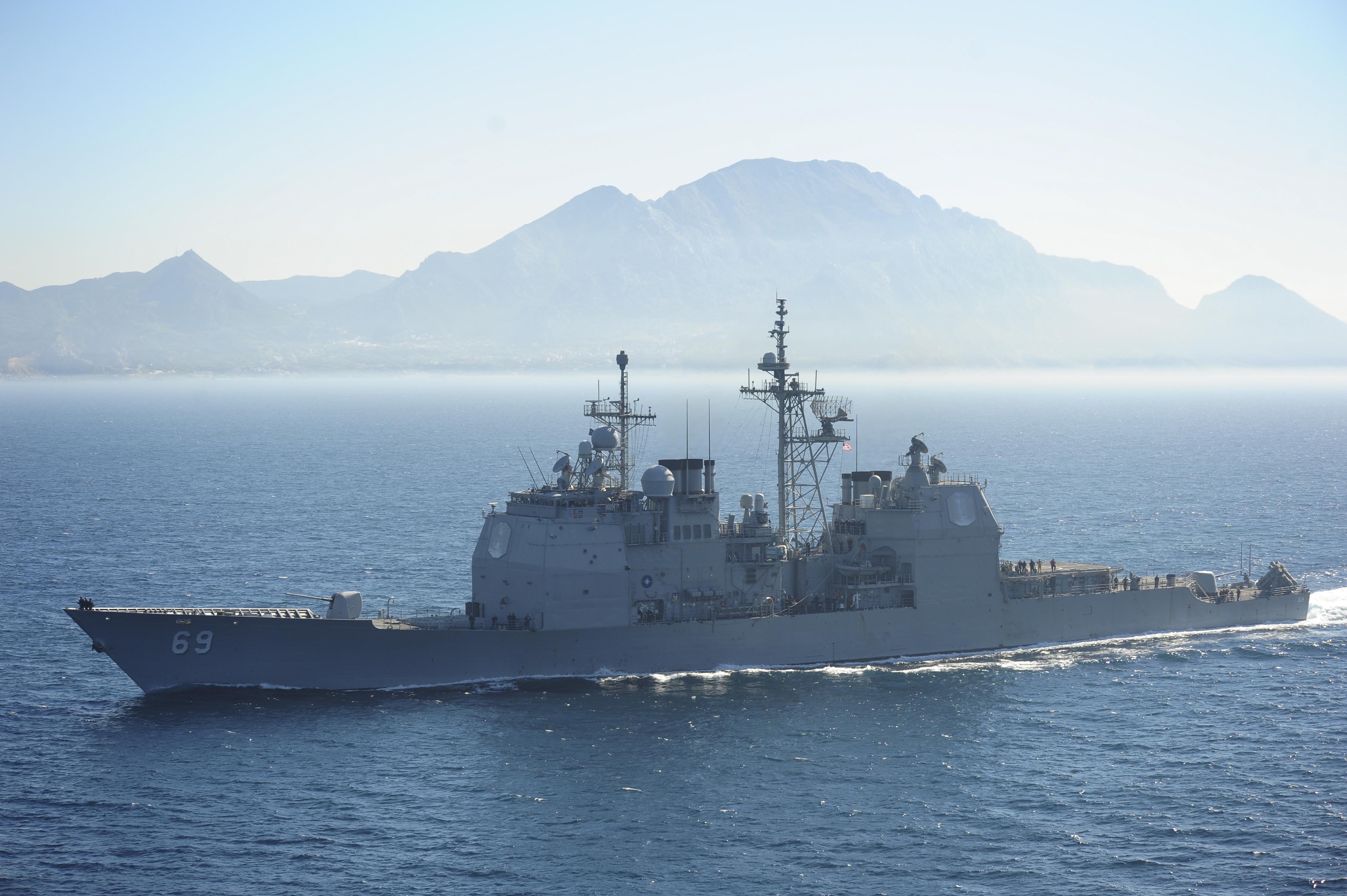
WASHINGTON, D.C. — The Navy’s new focus on distributed maritime operations and the incorporation of high-end weapons is prompting a re-look at the future Large Surface Combatant program and an apparent delay in the planned start of the new ship class.
Navy leaders had previously said the new program – not a direct replacement for the cruiser or destroyer, but a generic next step for the surface navy – would be awarded to a shipbuilder in 2023 or 2024. However, this week’s Fiscal Year 2020 budget request shows shipbuilding requests out through 2024 and makes no mention of the Large Surface Combatant procurement. A budget briefing noted $71 million in research and development funds in FY 2020 but provided no other clues about the program’s future.
Asked about this apparent delay in the new ship’s start, Chief of Naval Operations Adm. John Richardson told USNI News that the requirement for the ship is being revisited in light of the new focus on future operating concepts that emphasize distributed, lethal – and in many cases unmanned – platforms equipped with weapons still in development.
“I’ve got to tell you, given the discussion that’s happened already, first question that we have to do is prove to ourselves that we need a large surface combatant. What is the unique contribution of something like that in the face of all these emerging technologies?” Richardson said while speaking to reporters after a speech at the annual McAleese Defense Programs event.
“Right now the discussions point to the fact that it brings a unique capability in terms of house larger types of weapons, larger missiles; you certainly get more aperture on a bigger sensor; those sorts of things.”
Richardson did not say how long a delay the new combatant may face while these discussions take place.
The FY 2020 budget request also notes the Navy’s intention to cancel a planned cruiser modernization and life-extension program – which the service has asked to do previously and Congress would not agree to. Though the Large Surface Combatant is not meant to be a one-for-one cruiser replacement, today’s cruiser houses the air defense commander’s team for the carrier strike group, and the Large Surface Combatant was expected to pick up that mantle.
A recurring feature of the 2020 budget request is an acceleration of emerging technologies – things that the Navy hasn’t defined its requirement for and industry hasn’t perfected, but that the Pentagon is sure it will need in this era of great power competition – at the expense of known technologies and programs. The future frigate, which will likely command and control a variety of unmanned vehicles in all domains, was accelerated in the budget, as were the development of medium and large unmanned surface vehicles. Meanwhile, the destroyer program was reduced by one ship over the five-year Future Years Defense Program, the cruisers will retire earlier, Large Surface Combatant is delayed and amphibious warship procurement was slowed.
Richardson, in his speech and to reporters, said the Navy was moving fast on these emerging technologies, pouring $1.3 billion into “accelerated acquisition” programs alone for things like laser weapons, unmanned underwater and surface vehicles, and the development of an operational architecture to connect unmanned systems to manned ships and intelligence and fire control data.
“We’ve got to get that capability moving faster, and so we’ve done a lot in our budget to try to accelerate these things,” Richardson said during his speech.
However, he acknowledged that the Navy is still wrapping its head around what exactly distributed maritime operations is and what it means for the Navy, its operational plans and its acquisition needs.
Asked by USNI News about changing its spending plans before having a solid idea about what to buy and how to operate it, he said there was an “iterative discussion” happening, but that the discussion was clearly focused on the National Defense Strategy and the great power competition it described.
“We stood up these development groups on the East and West Coasts: one primarily conceptual on the East Coast, one primarily capabilities on the West Coast. But they’re going to be in kind of a dynamic tension, because concepts will give rise to desired capabilities; new capabilities will open up doors for new conceptual approaches,” he said.
“So this is really a vibrant and exciting time as we move forward, and of course it’s going to have budgetary implications because we need to buy new stuff, try it out in exercises and experiments, adjust as we need – and so you’ll see, I think, a much more fluid approach going forward.”
In describing the Navy’s 2020 budget request, Richardson said, “the high-level message of the budget is that it is, one, focused on great power competition. Two, it is very focused on moving into the future with respect to some of these emerging technologies that are going to be decisive: so conventional prompt strike, hypersonics, directed energy, artificial intelligence, autonomy, machine learning.”
But those priorities are paid for by canceling the refueling of aircraft carrier USS Harry S. Truman (CVN-75), which was set to begin its mid-life overhaul in 2025. In a further nod to the fluidity of the Navy’s understanding of what a future fight looks like and therefore what gear it needs, Richardson said the Navy had to weigh another 25 years of life for a Nimitz-class carrier against “requirements which are being studied.”
“We’re continuing to study the security environment. We’re doing a force structure assessment that will update the (2016) force structure assessment that resulted in the 355 ship goal. The combatant commanders are doing their analysis of the security environment and updating their global campaign plans. That work will all be done this year,” Richardson said.
“And what this budget also entails is the flexibility to respond to what those studies tell us. … If we continue to see a need for more aircraft carriers, we have the flexibility to revisit that decision on the Truman.”





